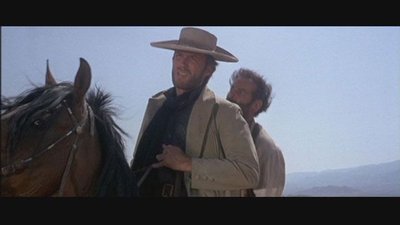 What is the most important factor in the creation of a movie? Is it a good script, quality acting, or great visuals? Or is it something more? It is my personal belief that it is the filmmaker’s responsibility to create his own world.
What is the most important factor in the creation of a movie? Is it a good script, quality acting, or great visuals? Or is it something more? It is my personal belief that it is the filmmaker’s responsibility to create his own world.
Christopher Nolan calls it a “hyper-reality.” One of the reasons his Batman films are so successful is because they exist in a realistic setting. However, this is only true to a point. Strip the cameras away and imagine if this were your world. It is likely that you would be appalled by the actions of Batman.
I like the Clint Eastwood film, High Plains Drifter. It is a surreal Western set in a town called Lago. Eastwood portrays a ghostlike character, almost an angel of death coming to put the sinners of Lago through Hell. It can be argued that this is Eastwood’s cruelest and most amoral character. He rapes women and kills without a thought. Were I to be living in Lago in the 19th century, it’s easy to imagine the disgust I would have for him. However, since it is a very fine film, I accept that it takes place in a world different from my own.
It seems to me that this is the main argument people have when they decry the violence in movies. Most adults realize that films take place in a reality that exists separately from their own. Children aren’t quite able to understand this.
Nevertheless, it must be a reality in the context of the film. Often when films fail, it is because they struggle to form this world. Acting, writing, and cinematography all play individual roles in the creation of this world. Costumes, color palettes, casting, and dialect are all of equal importance. Think about the last film you strongly disliked. Did one of these individual parts fail, thus collapsing the reality?

Recently, I began filming on a short version of a script I began writing in 2007. It is set in a small mountain town called Red Gold. We spent six days in a small town called Julian, in the mountains of San Diego. Surrounded by tall pines, horses, guns, and staggering scenery, I began to live not in Julian but in Red Gold.
It was only when I returned to Los Angeles that I realized that Red Gold existed somewhere in my mind. I wanted to return to it, to live in it again. Those six days were transformed into a lifetime — perhaps a previous life that only exists in my dreams. The challenge now is to piece together this world using the footage we captured. As Jim Morrison sang, “This is the strangest life I’ve ever known.” I am still trying to understand which life is the stranger: the one I am now living or the one that exists somewhere in my mind.
Films have the extraordinary ability to transform us to a different place. Even when a film is based on true events it exists in a different setting. It is the parallel universe you descend into when you tumble into a black hole, or the 7 1/2 floor that exists within John Malkovich’s mind. In a sense, every successful film is in some way surreal. All great works of art accomplish this feat. The best music always has the ability to transform, to beam you to another place.
Some call this “escapist.” I dislike that term. Film, while changing your reality for two hours, also has the power to impact the way you live in your permanent reality. Certainly some movies serve as escapist entertainment, but the most successful ones are those that both entertain and intellectually stimulate. Think about the films that stand the test of time, those that are part of the bigger picture. There is absolutely nothing wrong with being entertained. Just remember that we are all entertained by different things.
The goal of a filmmaker must be to craft a world. He must keep a close eye on the sagging pieces; else the structure will collapse like a house of cards. Take inspiration from the world around you. It is strange, beautiful, chaotic, and perfect. Every single thing you see has a meaning for existing, even if it merely exists to die so that something else may take its place. We are all resources, and we all have our place in this world. It is the responsibility of the filmmaker to fit his pieces together in much the same way, for every character and every element must serve its purpose.


Comments